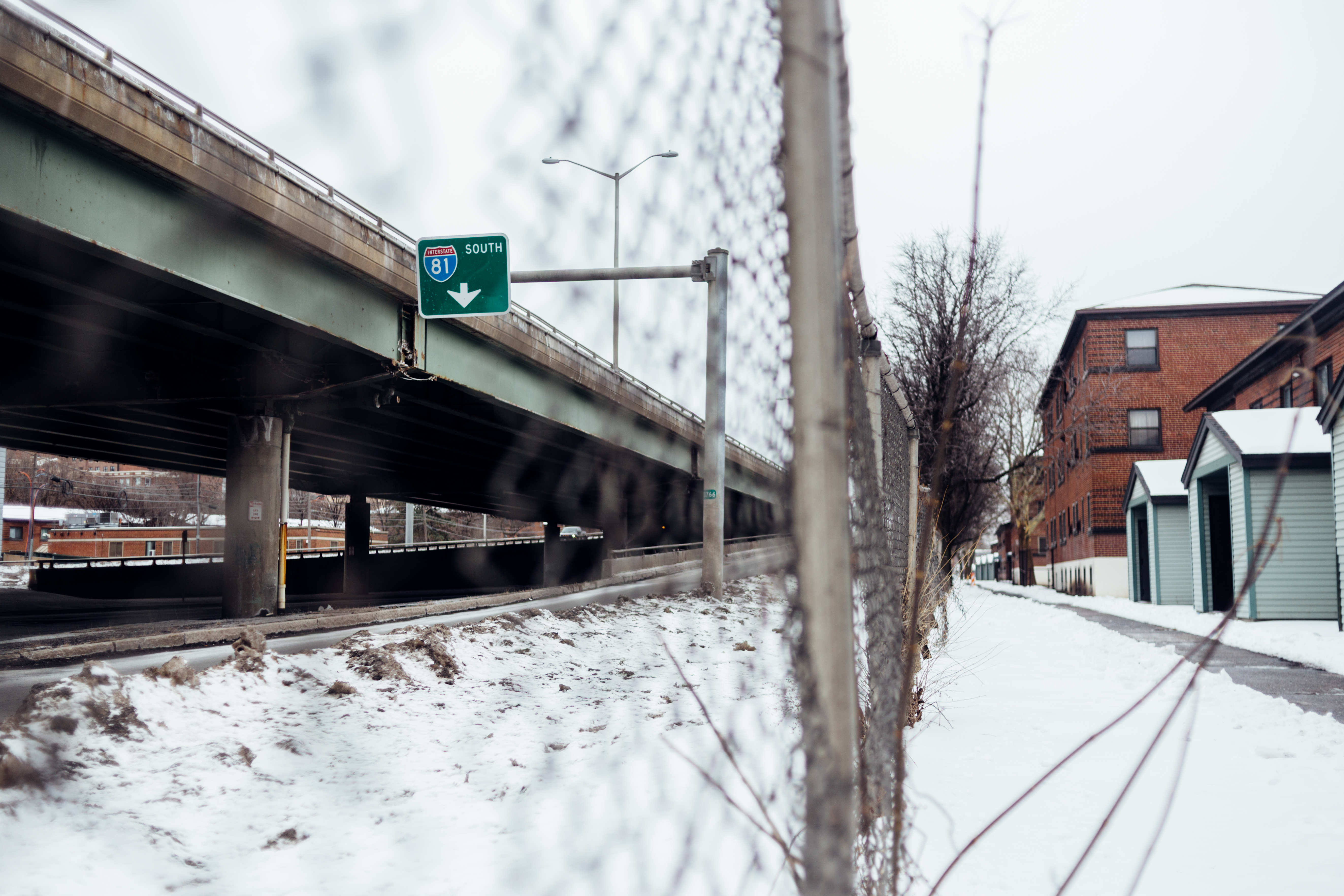A Long Island Legislature is Robbing New Yorkers of Color of their Voting Rights
Civil Liberties Union

A huge infrastructure project set to break ground in Syracuse will significantly impact the lives of thousands of low-income people, in a primarily black neighborhood.
State officials are weighing several options to replace the crumpling I-81 viaduct that cuts through the center of Syracuse. But every option under consideration will significantly affect the lives of the people who live near the highway.
How residents are able to get around during the demolition of the viaduct should be at the forefront of any plans state officials come up with for replacing I-81. Helping community members deal with the impacts of the construction is vital to any plan. But New York’s Department of Transportation has refused to consider mitigation efforts before a final decision on what will replace the highway has been made.
That could have an enormously negative impact on the wellbeing and livelihoods of an already economically disadvantaged group of primarily black Syracuse residents.
The people living in the shadow of I-81 rely heavily on public transportation. Their ability to do everyday things like pick up their children from school, go to medical appointments, or get to the grocery store could be made impossible by this massive transportation project.
The Department of Transportation must create a comprehensive plan to make sure people can get from point A to point B and they must do it soon. But the DOT and CENTRO, Syracuse’s public transportation provider, have not come up with a comprehensive plan to ensure residents and students will be able to freely access public transportation during the demolition of the viaduct.
Approximately 1,400 rental units are within a 27-block area along the I-81 viaduct. In many cases, I-81 towers over the units. In some parts, housing units border the viaduct by a mere seven feet. There is also a 500-student elementary school and a few hundred homeowners who live adjacent to the highway, also known as census tract 42.
The community closest to the I-81 viaduct is Syracuse’s most vulnerable population.
Two- thirds of the population in census tract 42 live in poverty. Pioneer Homes, the largest complex in the neighborhood, has a poverty rate of 70 percent.
And while transportation is the immediate concern, there are important links between transportation, educational opportunities, employment and economic resources. The educational opportunities a child receives are often determined by the neighborhood they live in. The neighborhood they live in, in part, is determined by the economic resources they have and the economic resources they have are at least partially determined by access to transportation.
It is already difficult for many people who live near I-81 to get to their jobs. Now they face a transportation crisis if CENTRO and the DOT do not act.
The DOT is required to mitigate damages to communities directly impacted by major infrastructure projects like I-81. Part of the mitigation efforts must include increased funding for CENTRO to be able to ensure residents have access to public transportation during and after the demolition of I-81. CENTRO is already underfunded and unable to meet the needs of Syracuse residents. The city’s public transportation network will be even more strained by I-81’s construction.
The community closest to the I-81 viaduct is Syracuse’s most vulnerable population. They are suffering the residual effects of the original I-81 build that dismantled a working class black neighborhood. The erection of I-81 contributed to high concentrations of poverty by making it difficult for residents to safely and easily get to other parts of the city, and by stifling job opportunities. The highway also spurred high concentrations of housing and school segregation. Now residents could be without access to public transportation.
A proposal that ensures residents affected by the demolition are able to travel freely should be a part of the DOT’s draft Environmental Impact Statement for I-81, due out any day. But if it’s not, the DOT’s final Environmental Impact Statement must include this plan.
When the plan for the original I-81 was first crafted, the people most impacted by the construction were shut out of the planning process. That cannot happen again.
State funds should be set aside to ensure that every resident in the area has access to CENTRO or other modes of transportation. The DOT and CENTRO must determine which bus routes will be impacted, which ones should have increased service, and what new routes need to be created. This plan should be put in place before the I-81 demolition occurs.
When the plan for the original I-81 was first crafted, the people most impacted by the construction were shut out of the planning process. That cannot happen again.
There is still time to get your voice heard. Once the Draft environmental Impact Statement is released, the public has 45 days to make comments. The DOT, by law, must consider, respond, and take a “hard look” at each comment. To submit your comment, contact the Department of Transportation with questions, or get on the project’s mailing list, call the project Hotline: 1(855) I81-TALK or 1(855) 481-8255 or go here.